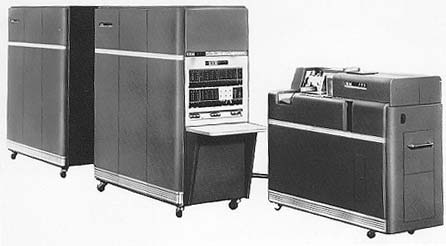Looks like Edison used TODO list too.
This article on openculture has a snapshot of his todo list from year 1888.
These were his 108 things he wanted todo.
1 - Cotton Picker
2 - New Standard Phonograph
3 - Hand turning phonograph
4 - New Slow speed cheap Dynamo
5 - New Expansion Pyromagnetic Dynamo
6 - Deaf Apparatus
7 - Electrical Piano
8 - Long distance standard Telephone Transmitter which employs devices of recording phonogh
9 - Telephone Coil of Fe [iron] by tt in Parafine or other insulator
10 - Platina Point Trans using new phono Recorder devices
11 - Gred Battery for Telephones
12 - * Long Distance
13 - * Phonoplex
14 - * Jump Telegraph
15 - * Voltmeter
16 - Improved Magnetic Bridge for practical work
17 - Motograph Mirror
18 - * Relay
19 - * Telephone practical
20 - Artificial Cable
21 - Phone motor to work on 100 volt ckts
22 - Duplicating Phono Cylinders
23 - Deposit in vacuo on lace, gold silver also on cotton molten chemical compound of lustrous surfaces to imitate silk also reg plating system
24 - Vacuous Ore milling Large Machine
25 - Magnetic Separator Large
26 - Locking material for Iron sand
27 - Artificial Silk
28 - Artificial filiments [sic]
29 - New [illeg.]
30 - Uninflammable Insulating Material
31 - Good wax for phonograph
32 - Phonographic Clock
33 - Large Phonograph for Novels, etc.
34 - Pig Iron Expmts with Electricity + Magnetism
35 - Malleablizing Cast now in Vacuo
36 - Drawing fine wire
37 - Joy phonograph for Dolls
38 - Cable Motograph
39 - Very Loud Motograph telephone with 1/3 siz phonogh motor.
40 - Magneto telephone with actual contact end magnet compression of an adjustable rubber press as in new phones
41 - Snow Compressor
42 - Glass plate water ore repeator
43 - Tinned faced [illeg.] for Stove Castings
44 - Refining Copper Electrically
45 - Quad neutral relay
46 - Cheap low induct Cop Insulating material for Lead Cable people
47 - Constant moved for nonfoundry
48 - 200 volt 20 cp lamp
49 - Cheap [illeg.] Indicator
50 - Recording Valt Indicator
51 - Box balancing System
52 - Alternating Machine + Transformer
53 - Sifua Surface Switches
54 - Vulcanizing [illeg.] African Rubber adullement
55 - Platinum wire [illeg.] cutting Machine
56 - Silver wire wood cutting system
57 - Silvering or Coppering bathing cloth in Vac for durability
58 - S Mater attend own with new devices for c speed
59 - Expansion mirror platwire in vacuo
60 - Photoghy
61 - Photoghy by camping heat after central points
62 - Boron fil.
63 - Hg [mercury] out of Lamp
64 - Phonaplex Repeater
65 - Squirting glass sheet tube etc. Nickel [illeg.]
66 - Artificial Mother Pearl
67 - Red Lead pencils equal to graphite
68 - India Ink
69 - Tracing Cloth
70 - Ink for blind
71 - Fluffy Incandescent Burner for gas
72 - Regenerative Kerosene Burner
73 - Centralized arc in arc Lamp
74 - Cai-[illeg] Tesla arc lamp test
75 - Strengthening alternating cli by sternt Dynamo
76 - ERR Cont [illeg.] reducers
77 - Electroplating Machines for Schenectady
78 - Condenser Transformer
79 - Sqr ft difraction gratings in silver by 5000 [illeg.] tool special [illeg.] lathe for ornamental purposes
80 - Photo Scant [illeg.]
81 - Cheap plan produce Mimeograph surfaces
82 - Miners battery + lamp
83 - Sorting Coal from Slate Machine
84 - Butter direct from Milk
85 - Burning asphalt Candles by high chimney
86 - Magnets RR signals
87 - Soften [illeg.] of books transfer to Cop plate + plate to [illeg.] matrix
88 - Telephone Repeater
89 - Substitute for Hard rubber
90 - Artificial Ivory
91 - Soften Vegetable Ivory to press in sheets
92 - Various batteries on [illeg.] Type
93 - Revolving Thermo
94 - Caller Indicator for Jump Telegh
95 - Marine Telegraphy
96 - Long distance speaking tube filled H20 2 dia pressure
97 - Lend plate battery for modifying attending Current
98 - Two revolving bands in battery Lead faced press in liquid close together + out into separate chambers to [illeg.]reduce by gas the other
99 - Siren phonogh
100 - Perm mag like an electromag of [illeg.] hand steel high polish separately magnetized + forced together powerfully[illeg.]
101 - Telephone working more [illeg.]
102 - Eartubes formed crescent [illeg.] wire
103 - Long strip 50 cp carbon under stress [illeg.] for
104 - Cheap Voltmeter
105 - Chalk Battery
106 - Dynamo or motor long tube in long magnetic field top bottom contacts forcing water through generator current by passage.
107 - Thermo battery slick Copper oxidized then plated over surface oxide nailed to make good contact [illeg.]
108 - Disk Phonogh
